In a previous blog post entitled “Coordinates of Wonders,” I discussed known or suspected supernovae that have occurred within historical time. The most recent recorded events on Earth were during the early days of optical astronomy: in 1572 (known as Brahe’s star) and in 1604 (known as Kepler’s star). The fact that only 32 years separate these two events is an incredibly short interval, and no similar explosions have been observed in our own galaxy since then. However, in 1987, during the early stages of neutrino astronomy, a supernova explosion was detected in the Tarantula Nebula, which is located in the Large Magellanic Cloud (one of the Milky Way’s two satellite galaxies). This event was designated as SN 1987A. The observations of this explosion were made at the Las Campanas Observatory in Chile. However, before the effects of the explosion became visible to the naked eye (reaching a stellar magnitude of +3), it was first detected by neutrino detectors. The neutrino flux produced by the supernova explosion was so immense that it was clearly recorded on Earth, even though we are situated 168,000 light years away from the actual event.
Supernova 1987A was particularly noteworthy because it appeared in place of a blue giant. According to current theories, supernova events only occur as the final stage of a red supergiant’s evolution. However, it is possible for a black hole to arise in place of a red supergiant as well.
I was inspired to revisit this topic due to a series of disturbances that the red supergiant Betelgeuse is currently experiencing in May-June 2023 (at the time of writing). On May 25, an article about the current state of Betelgeuse was published by the esteemed @SLY_G. In the following discussion, we will explore the potential consequences of the demise of this supergiant, their significance in the field of science, and the methods used to predict and simulate them.
Betelgeuse typically completes the roster of the top 10 most luminous stars in the nocturnal firmament (it holds the 9th or 10th position).
And behold, this is the appearance of the 25 most brilliant stars through a telescope:
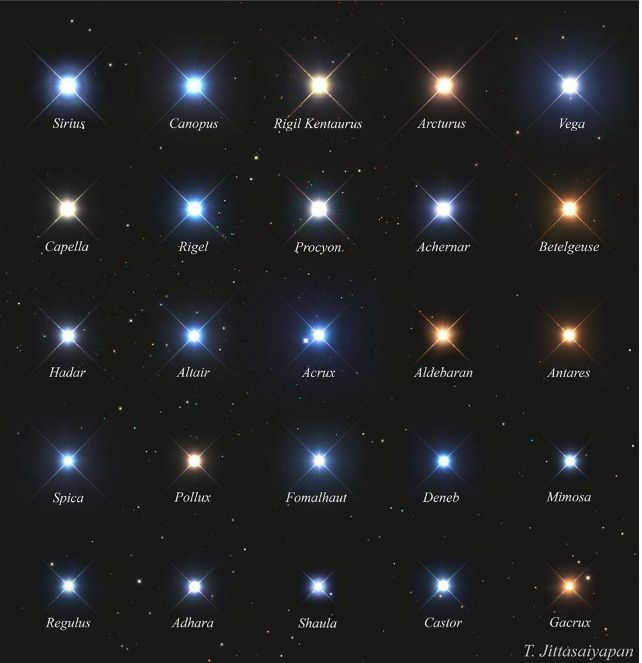
In October 2019, Betelgeuse experienced a significant decrease in its brightness, which was later recovered by April 2020. By December 2019, the star’s apparent brightness had dropped by up to a third, causing it to fall out of the top 20. Initially, it was speculated that this darkening was due to an interstellar gas cloud passing between us and the red giant. A comprehensive study conducted by experts from the Paris Observatory and the Catholic University of Leuven in Belgium, which was completed in 2021, aimed to analyze the causes of this phenomenon. Miguel Montagre from the Paris Observatory highlighted that this was the first time that changes in the brightness of a star could be observed almost in real time.
According to a study published in the journal Nature, the researchers found that the star underwent a visual dimming event, during which it was partially obscured by a cloud of gas and dust that had separated from its outer layers. This cloud was created as a result of the cooling of Betelgeuse’s surface.
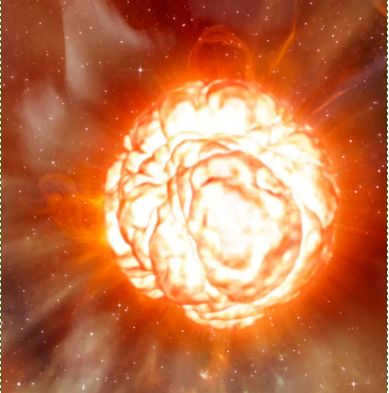
The surface of Betelgeuse is in a state of constant turbulence, with the formation, popping, and bursting of massive gas bubbles occurring in the upper layers of the star. The research team has reached the conclusion that shortly prior to the Great Extinction event, the star experienced an eruption of such a bubble, resulting in a slight cooling of the surface region and the solidification of a portion of the stellar material into dust. This is the process by which stardust is generated, which subsequently contributes to the formation of protoplanetary disks.
Betelgeuse is classified as a variable star, which means its brightness fluctuates cyclically. There are approximately 150,000 known variable stars and even more potential candidates. It’s worth noting that the Sun is also considered a slightly variable star, as its brightness changes during the 11-year Chizhevsky cycles. All variable stars, including Betelgeuse, have intrinsic variability caused by internal factors. However, there are also “eclipsing-double” stars that only appear variable from our perspective on Earth. Physical variable stars can be further categorized into different groups.
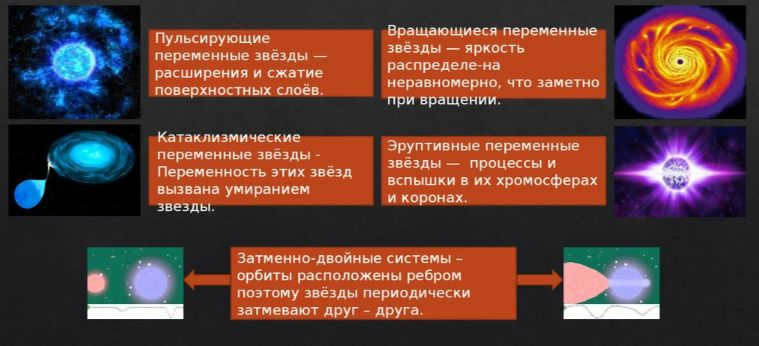
Betelgeuse is classified as a pulsating variable star, meaning that its outer layers undergo periodic contractions and expansions. This cyclical process causes an increase in the star’s luminosity as its surface area expands.
Betelgeuse follows a specific pattern of expansion and contraction with a duration of approximately 425 days. It is possible that we are currently witnessing another occurrence of this cycle. On longer timescales, the dimming of Betelgeuse can be attributed to the presence of sunspots, similar to those found on our own Sun but on a much larger scale. This Betelgeuse cycle, reminiscent of Chizhevsky’s solar cycles, may have a duration of around 6 years. It is conceivable that the current dimming phenomenon is a result of the simultaneous peak of these two cycles (425 days and 6 years).
The improbability of an explosion
Therefore, despite Betelgeuse’s inclination to become a supernova, the chances of it exploding in the current century are exceedingly low. Considering Betelgeuse’s brightness, color, size, and estimated age, it is likely that the star has recently entered the stage of thermonuclear fusion where helium is converted into carbon. Subsequently, carbon must transform into oxygen, oxygen into silicon, and silicon into iron. Only at the point of iron does this process cease, and the dying star transitions into a supernova or a black hole, depending on its mass. According to astrophysicist Jared Goldberg from the Flatiron Institute in New York, Betelgeuse could potentially remain in this fluctuating state for another 10,000 to 100,000 years.
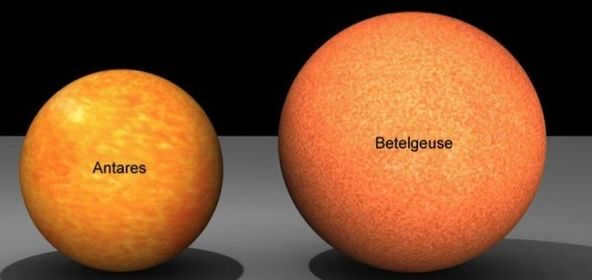
However, when the situation approaches the point of eruption, we will easily distinguish it from anything else. The initial sign of the upcoming eruption will be a strong influx of neutrinos (refer to section 2.2 and subsequent sections here). Once the fusion reactions have transformed a significant portion of helium into neon, a series of events will commence in a cascading manner.
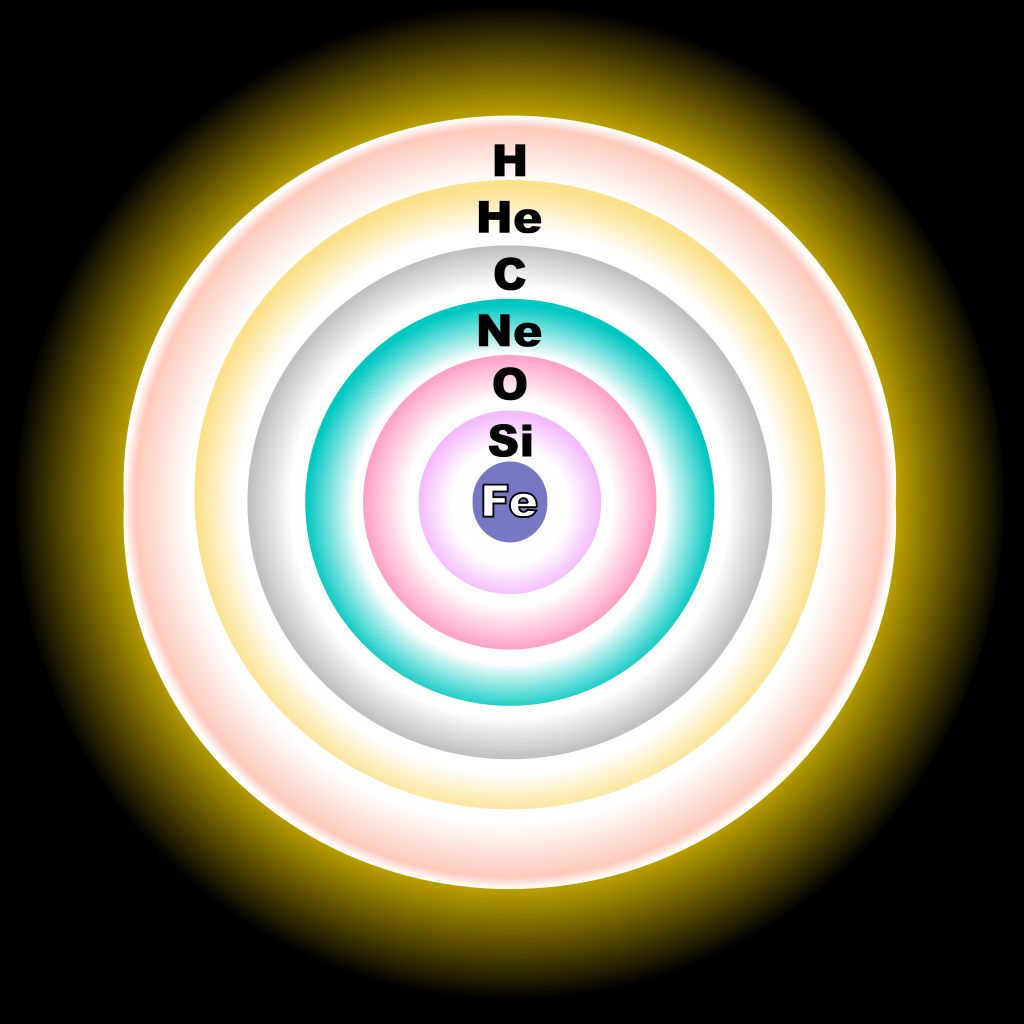
The ignition of neon occurs when the temperature in the central region reaches approximately 1.4 × 10 9 K. At this point, Neon-20 undergoes partial decomposition into oxygen-16 and helium-4, while also undergoing a conversion process into magnesium-24 and silicon-28 through the capture of alpha particles (helium nuclei). The duration of neon core burning in a star with a mass of 15 solar masses (15 M⊙) is estimated to be around one year. Consequently, the end result is the formation of an oxygen-silicon core.
When the temperature reaches 1.6 × 10 9 K at the center of the star, the oxygen-silicon core starts to collapse and ignite. This process takes approximately 9 to 14 months. Intermediate reactions occur, leading to the creation of sulfur, and then the silicon-sulfur core collapses over a period of about two months. At this stage, the final core made of iron begins to take shape. The temperature in the core reaches around 3×10 9 K at this point, and the silicon is transformed into iron within 4-5 days, or a little longer, as the remaining oxygen slightly replenishes the silicon reserves. The iron core consists of iron, cobalt, and nickel, and at this point the nuclear reactions come to a halt. The formation of the iron core is an exothermic reaction. The star experiences a brief dimming period of a few hours or a day, followed by an explosive event.
The destiny of Betelgeuse
Prior to the imminent demise of Betelgeuse, all these occurrences will be observable from Earth for a period of 1.5-2 years. The “neon” phase will be particularly striking. It will appear as a flickering light to the naked eye, resembling a display of fireworks when observed through a telescope. The resulting supernova remnant will emit light that is at least half as bright as the full Moon, potentially even rivaling the Moon’s brightness. It will stand out as the most luminous star, appearing larger than Venus to the naked eye. Its brilliance will be visible even during daylight hours and its presence will cast noticeable shadows at night.
A supernova explosion has the potential to cause a significant release of intense cosmic radiation, which could have catastrophic consequences if it were to occur in close proximity to Earth, including the possibility of mass extinction. In a recent study conducted by Brian Fields and his team at the University of Urbana-Champaign in Illinois, it was proposed that a supernova explosion may have been responsible for a mass extinction event that took place approximately 360 million years ago during the Carboniferous and Devonian periods. According to Fields’ calculations, the supernova could have occurred at a distance of around 20 parsecs (equivalent to 65.2 light-years) from Earth. As a result of this explosion, our planet would have been bombarded with intense ultraviolet and X-ray radiation for a duration of over 100,000 years. This would have caused significant damage to the ozone layer and resulted in the replenishment of radioactive isotopes such as samarium-146 (with a half-life of 68 ± 7 million years) and plutonium-244 (with a half-life of 81 million years). However, it is important to note that this event did not lead to complete extinction, and Fields suggests that the “killing distance” for a supernova explosion is approximately 25 light-years. Therefore, the explosion of Betelgeuse, a nearby star, poses no immediate threat to us and is purely of scientific interest. However, the timing of such an event remains uncertain. In the most pessimistic scenario for the star, it has already progressed to the second stage depicted in the above diagram, in which it is predominantly composed of helium and undergoing active carbon fusion.
The DUNE Collaboration
As previously mentioned, neutrino astronomy is one of the cutting-edge scientific fields that holds promise for predicting supernova explosions. It is worth noting that the LIGO detector, originally designed to search for stellar neutrinos, made a groundbreaking discovery in 2015 by detecting gravitational waves. A similar collaborative effort known as the Deep Underground Neutrino Experiment (DUNE) is currently in development and is set to launch in the late 2020s. This project is a joint effort between the renowned Fermilab and the University of Chicago. The DUNE detector itself is located at the Sanford Underground Research Facility in South Dakota and consists of a liquid argon tank equipped with state-of-the-art neutrino detectors. At present, the detector is in the testing phase, specifically detecting neutrinos that are directed towards it from Fermilab.
Once DUNE is finished, the detector will become an integral part of the Supernova Early Warning System (SNEWS). This global network of neutrino detectors is designed to detect any supernova occurring within the Milky Way. Unlike light, neutrinos have very little interaction with matter and do not scatter, allowing them to reach the detectors hours before any visible flare can be observed through telescopes. Despite its potential, SNEWS has yet to be successfully implemented. While there are currently hundreds of known supernova remnants, including many nebulae like the Crab Nebula, these explosions all occurred in the distant past. Even during the 1987 Magellanic Cloud explosion, the SNEWS system was not yet operational. However, the neutrino flux emitted by a supernova is truly unique and its sudden cessation would indicate that the star was extremely massive and had collapsed into a black hole before exploding. To date, such events have never been observed in the field of astronomy.
A lab-created explosion resembling a supernova
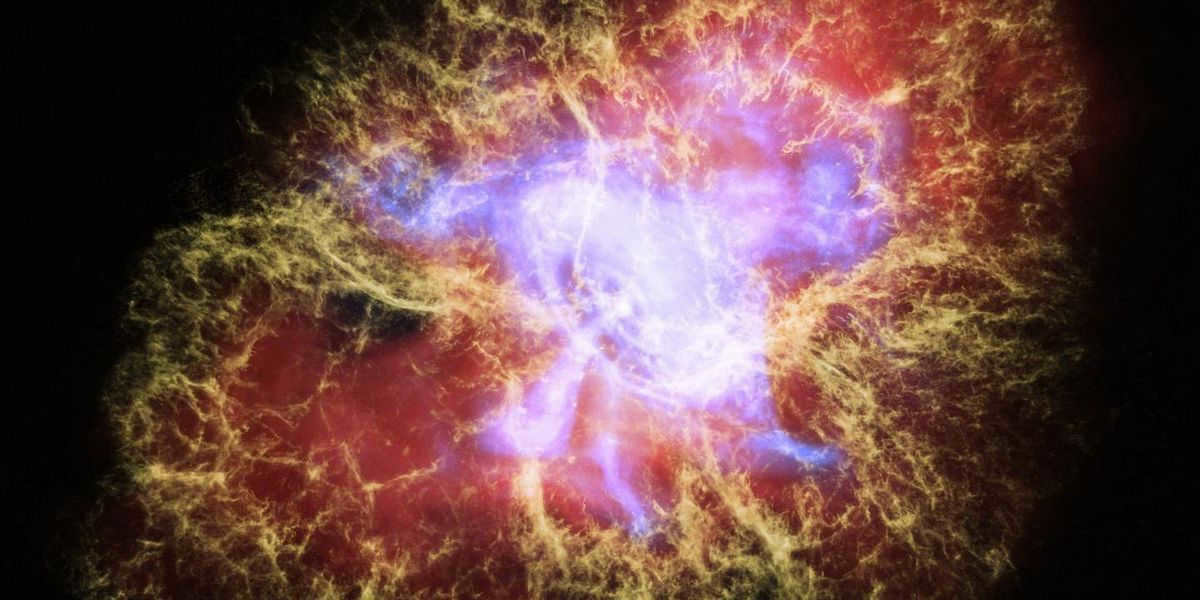
It is likely that this is the appearance of the Crab Nebula shortly after the eruption, which was witnessed on Earth as a supernova in 1054. The nebula has always been a subject of interest for astronomers, and it was even included in the Messier catalog compiled by French astronomer Charles Messier in 1774. Through spectral analysis, we have gained a confident understanding of its composition. As we conclude this article, I would like to mention another ambitious project currently being carried out at the Georgia Institute of Technology since 2020. A team of researchers, led by Ben Musci, is attempting to simulate a supernova explosion in a laboratory setting.
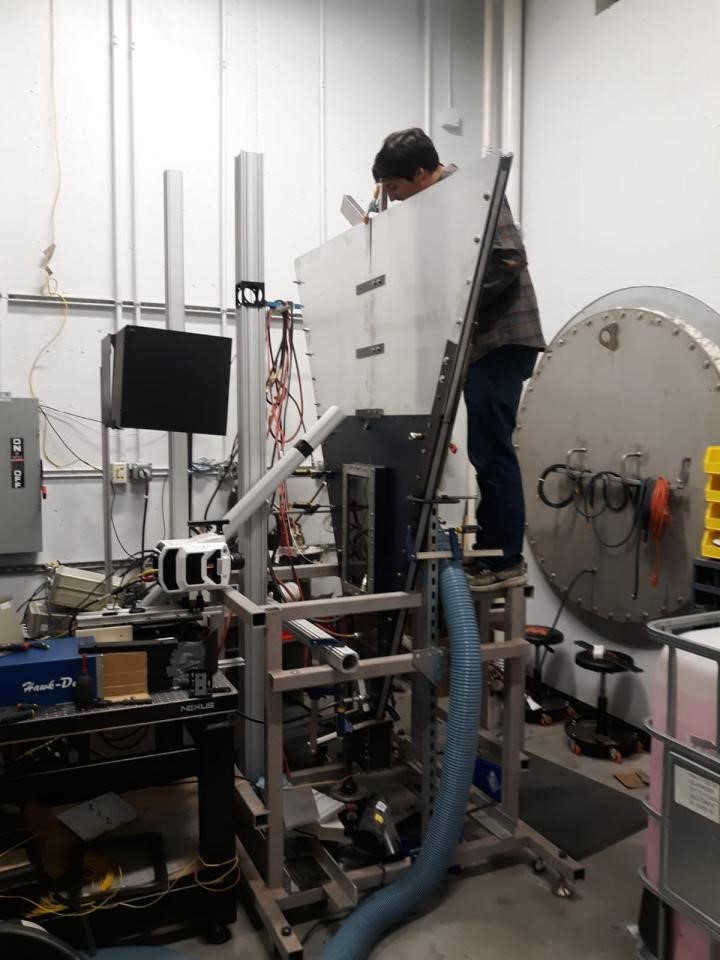
“It’s a machine that stands six feet tall and resembles a large portion of pizza,” describes Ben Musci. The machine is powered by a directed explosion, and the resulting shockwave travels through two layers of gas, creating turbulent swirls that bear some resemblance to those found in the outer gas envelopes of a star during a supernova. A laser is used to illuminate the vortices, and the entire process, which takes place on a scale of centimeters, is captured on camera. From there, mathematical calculations are employed to extrapolate the processes occurring in the chamber to the much larger scales of stars.
Devesh Ranjan, an engineer involved in the project, states that the team spent two years removing from the model any artifacts that are unrelated to stellar physics, such as secondary shock waves that bounce off the chamber walls. They also had to adjust the temperature, radiation background, and gravity to realistic values. Additionally, achieving a supernova explosion with a shape close to a perfect sphere required significant approximations in the laboratory. However, the vortices themselves and how they propagate in the gas medium during a real supernova explosion evolve and become more equalized over weeks to hundreds of years, whereas in the Muskie experiment, this process took only seconds or minutes. The stratification of the resulting gases and the variations in their concentration may eventually provide insights into the formation of planetary systems and stellar nurseries.
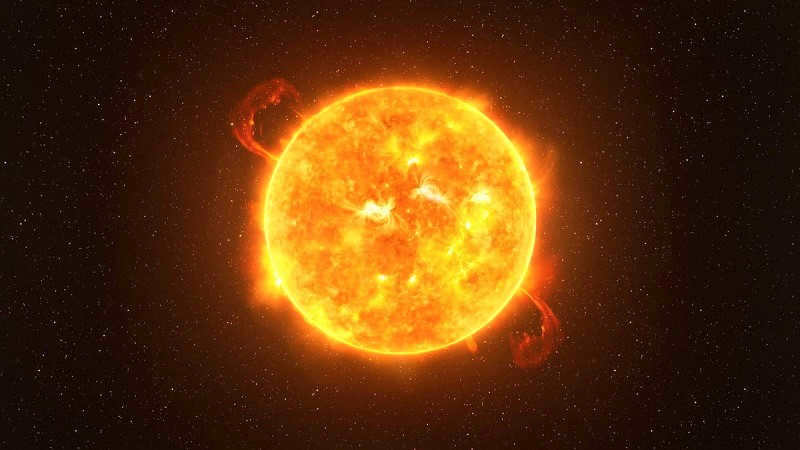
There is a lot of speculation and conjecture surrounding the massive star Betelgeuse. This is because scientists have recently announced that it is on the verge of becoming a supernova. Some believe that it will explode in the near future, giving us the chance to witness this event with our own eyes. However, others hold a different view, suggesting that this opportunity will only arise for our distant descendants. So, when will people be able to witness the spectacular explosion of Betelgeuse, and what are the reasons and mechanisms behind it?
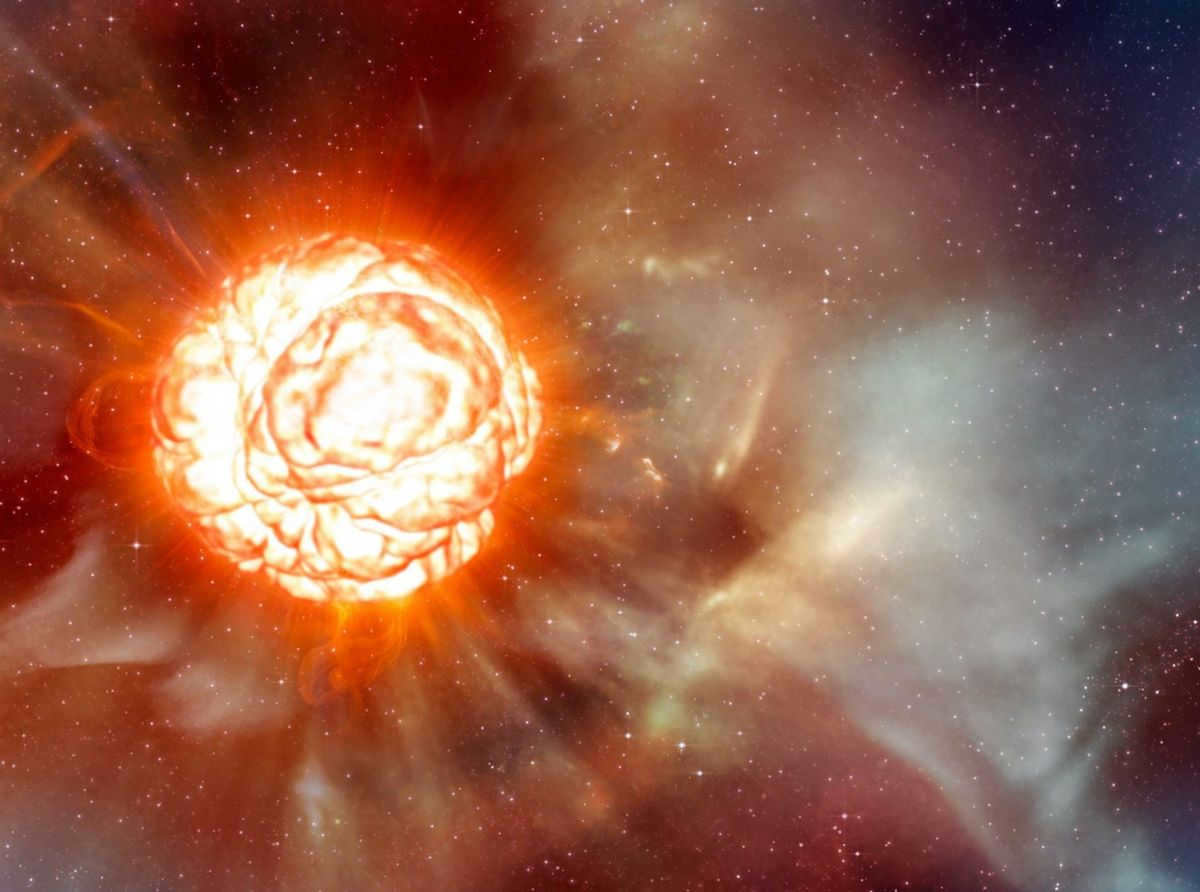
What is the reason behind scientists’ belief in the imminent explosion of Betelgeuse?
Betelgeuse, a red giant situated in the Orion constellation, has emerged as one of the most luminous stars in the observable universe.
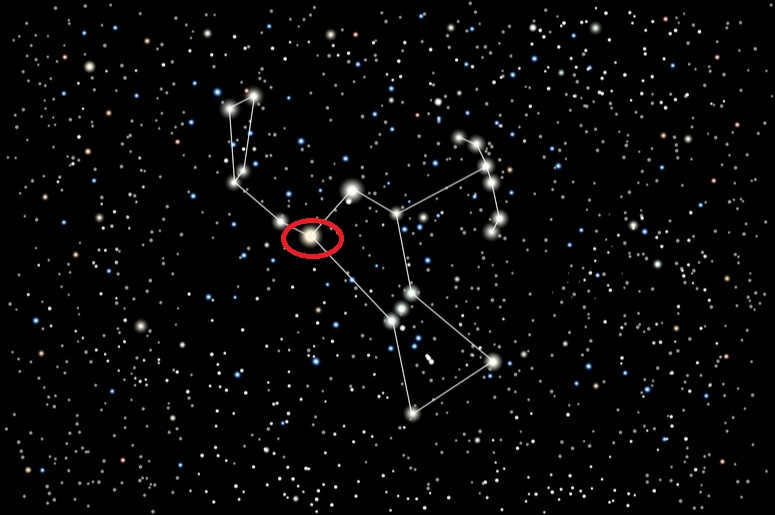
The red giant is losing weight rapidly, which explains why its total volume is 300 million times greater than our Sun, its brightness (or luminosity) is 100 thousand times higher, while its mass is only 17 times larger compared to such colossal numbers.
This phenomenon can be attributed to the rapid weight loss of the red giant.

The age of Betelgeuse is estimated to be around 10 million years, which is relatively young compared to the lifespan of our Sun. Our Sun, a yellow dwarf star, has a lifespan of about 4-4.5 billion years, while Betelgeuse, a red giant star, has a shorter lifespan.
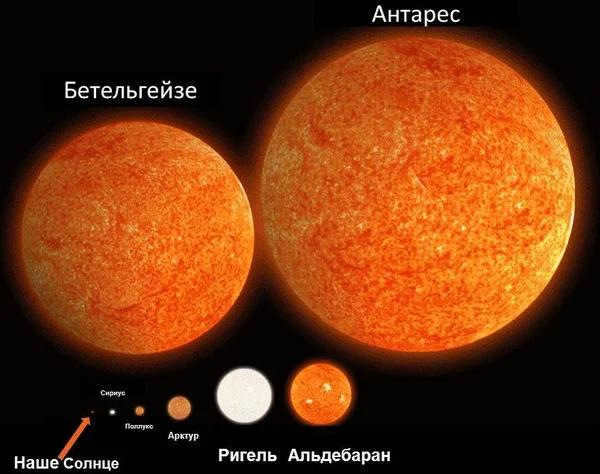
The previous ones do not consume such a tremendous quantity of fuel, whereas the latter ones, conversely, absorb more and turn into the most luminous. Betelgeuse has existed for a significant period, not all comparable stars can accomplish this. Consequently, it is destined to undergo a supernova explosion in the near future.
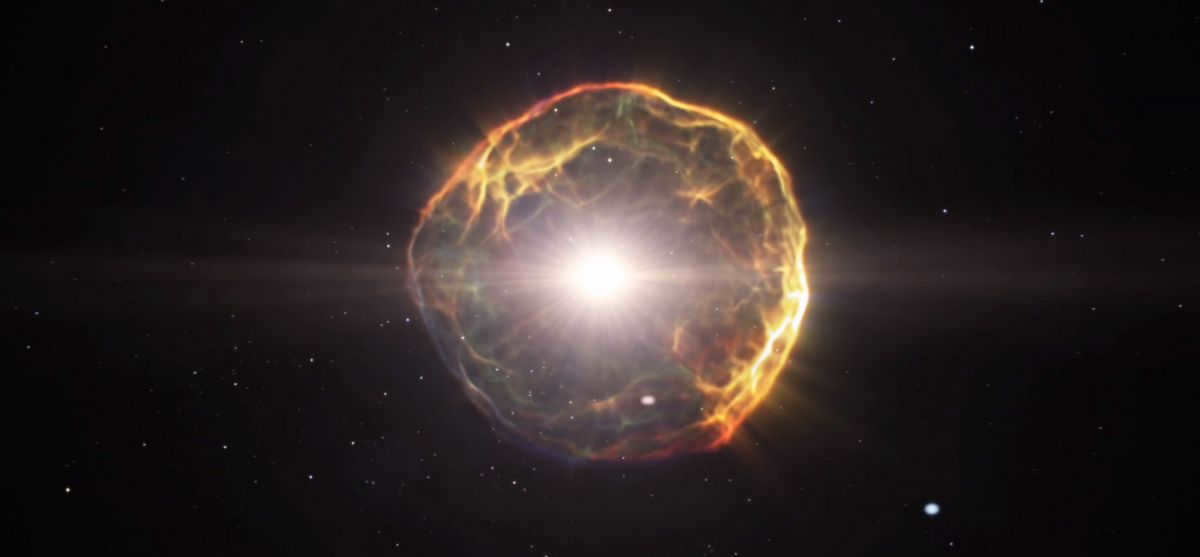
In addition, scientists observe that these types of stars are typically found in close proximity to one another. Given that Betelgeuse is located far from its “birthplace,” experts speculate that the explosion of its celestial “sibling” propelled it to a distant location from the rest of the stars.
The prevailing hypothesis posits that Betelgeuse was formerly part of the OB1 association in Orion A. This region lies just northwest of the Orion constellation and has been found to contain stars of similar ages.
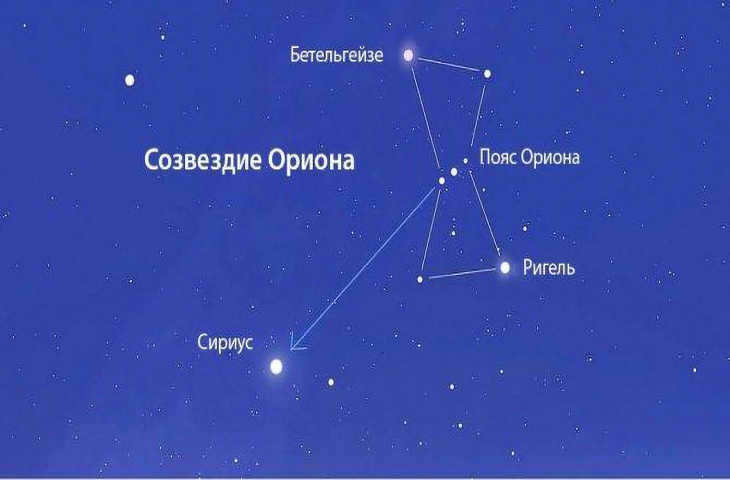
Therefore, what is the reason behind astrophysicists’ belief that it is on the verge of undergoing a new phase, known as supernova? In recent years, starting from 2009, there has been a considerable amount of discussion regarding Betelgeuse’s diminishing brightness and its shrinking size.
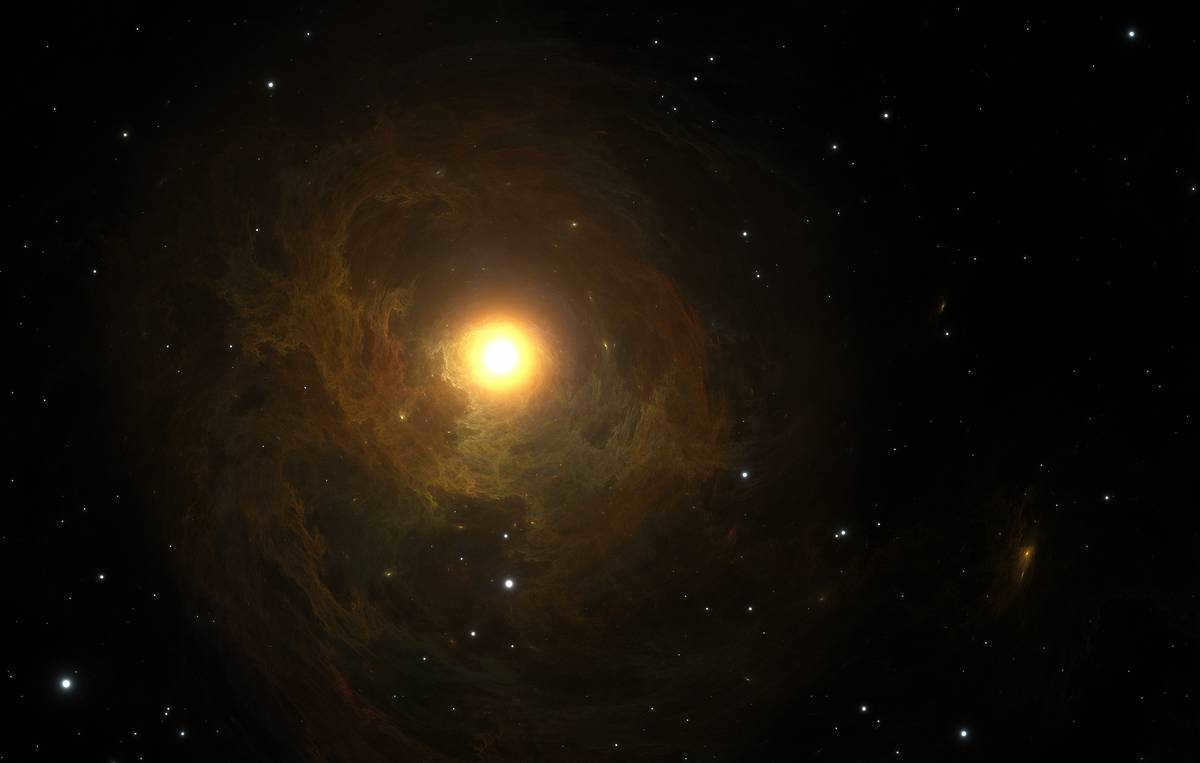
During the year 2017, scientists made an observation of a disturbance, a variation in size that amounted to approximately 550 to 920 times the diameter of our Sun. The brightness also vanished in 2019, but the pivotal moment occurred in 2020 – it emitted the least amount of light during this period compared to the previous five decades.
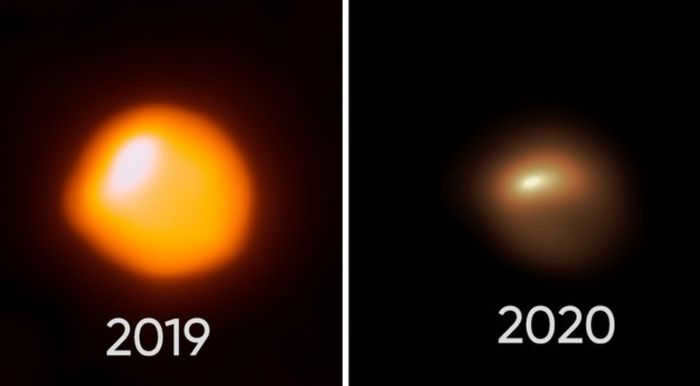
However, its previous brilliance is slowly being restored. Researchers observe that this process could persist due to the current instability of the star, as these behaviors are indicative of the star’s progression from a stable state to a supernova.
Everything hinges on a massive energy release, which subsequently results in cooling and dimming.
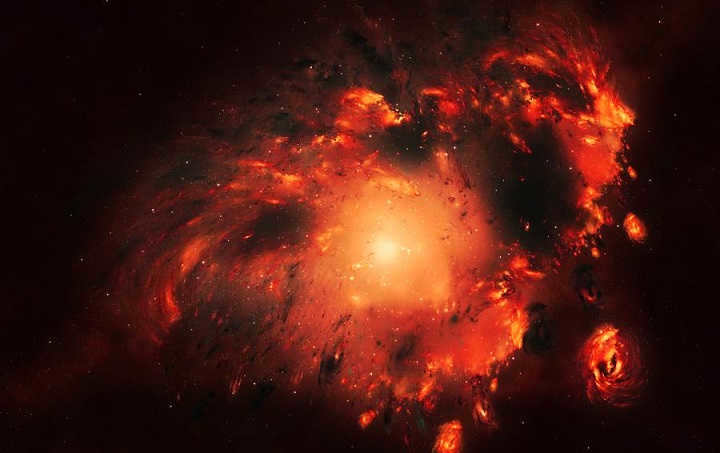
Here is a diagram showing the position of Betelgeuse within the Orion constellation:

There is a potential likelihood that this event will occur in the near future as a result of its own gravitational forces. The presence of instability could potentially expedite the process, causing the explosion to happen even earlier than initially predicted. However, it’s important to note that this is merely a conjecture made by astrophysicists.
The star is not expected to go supernova anytime soon.
Scientists have calculated that it still has approximately 100,000 years of life remaining. The precise date of its demise remains uncertain.

However, the sudden shifts in the star’s behavior have left astronomers unsettled and sparked rumors. These rumors have both frightened and intrigued the public. As a result, astrophysicists are now pondering whether this transition will be visible to the naked eye in the coming days.
Furthermore, scientists have limited knowledge about the behavior of stars during such periods, leaving open the possibility that this event could occur at any unexpected moment. If such a phenomenon were to occur, it would provide a valuable opportunity to gather as much information as possible about this star.

A diagram illustrates the emission of radiation from a supernova:
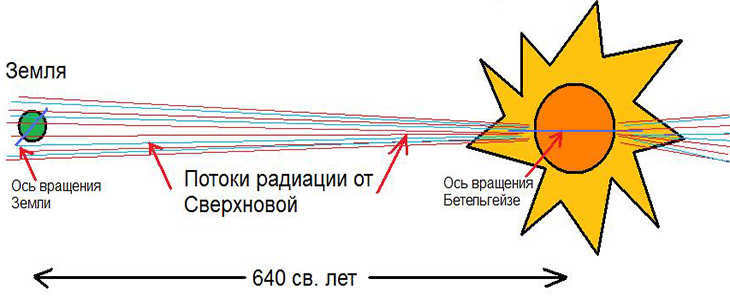
Anticipating the Spectacular and Colorful Explosion of Betelgeuse
Scientists predict that the impending explosion of Betelgeuse will be nothing short of extraordinary. Referred to as a “Type II supernova explosion,” it promises to be a visually stunning event.

However, if you are unable to witness such a phenomenon firsthand in the heavens above, there are programs available that simulate the awe-inspiring spectacle of a supernova detonation.
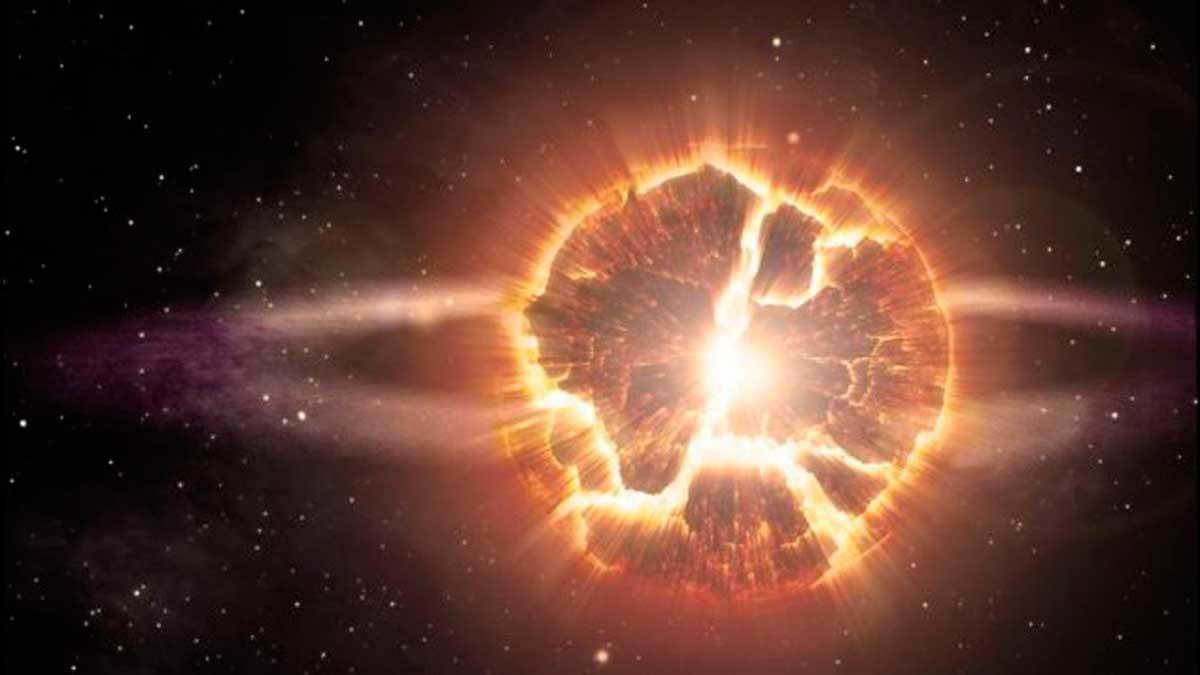
A tremendously powerful thermonuclear reaction will commence, giving rise to an immense shockwave that will propel the shell back into a confined region of space.
This level of power has the potential to displace nearby stars and asteroids, potentially resulting in a slight rearrangement of the cosmic order.
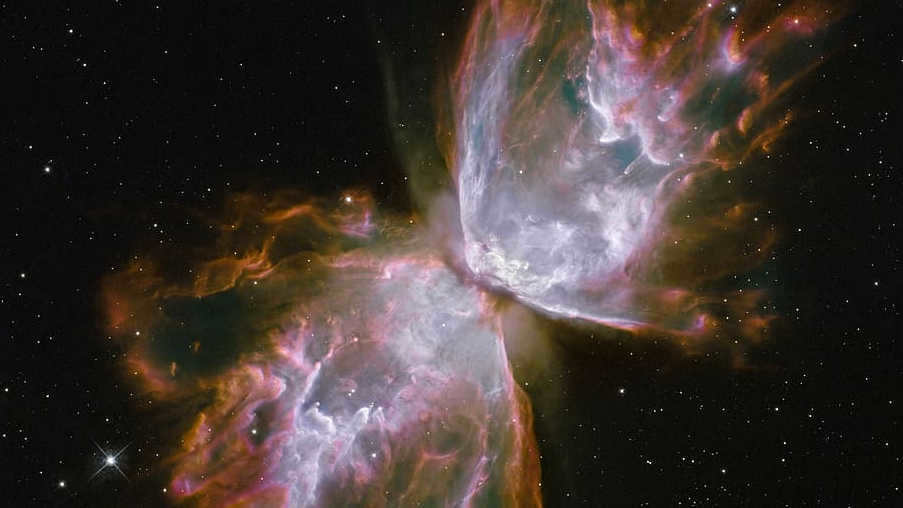
The star’s core will enter a new phase known as a neutron star. These types of stars emit a strong light, and since Betelgeuse is a red giant, it will appear as bright as the Moon in our night sky.

Even in daylight, the radiance of the exploding star will be observable. This luminosity may endure for a span of several months before gradually diminishing.
Earth faces a peril
In contrast to the Sun, the Earth is situated at a considerable distance from Betelgeuse, ensuring that it remains shielded from the full extent of its destructive force.
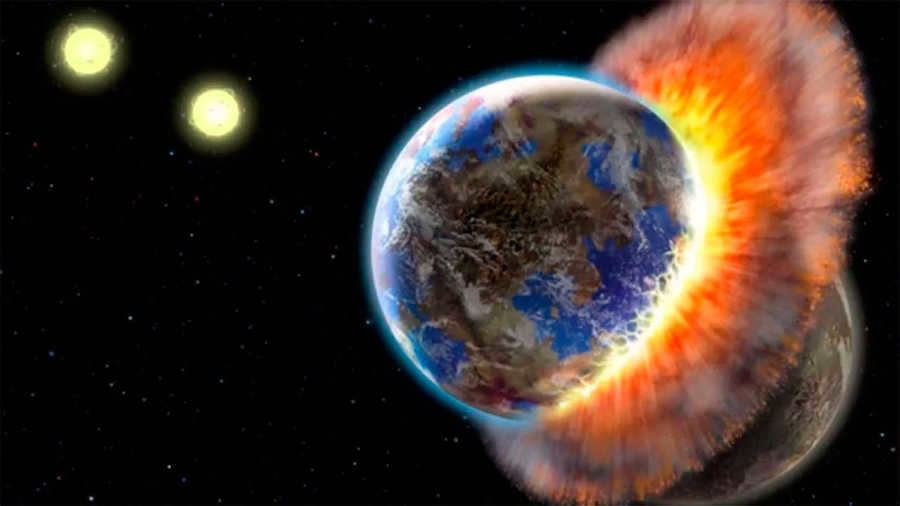
There is speculation that in about 2 billion years, the star Betelgeuse will reach a critical stage.
As it continues to expand, it will inevitably consume planets similar to Earth, and ultimately, when it finally explodes, the entire system will vanish due to the immense release of energy.

Typically, when stars explode into supernovae, there is a significant increase in temperature on the planet. This sudden rise in temperature can cause damage to a crucial layer in the atmosphere known as the ozone layer. The ozone layer serves as a protective shield, not only guarding against internal issues like carbon dioxide emissions, but also shielding the planet from harmful cosmic and solar radiation, as well as strong winds.
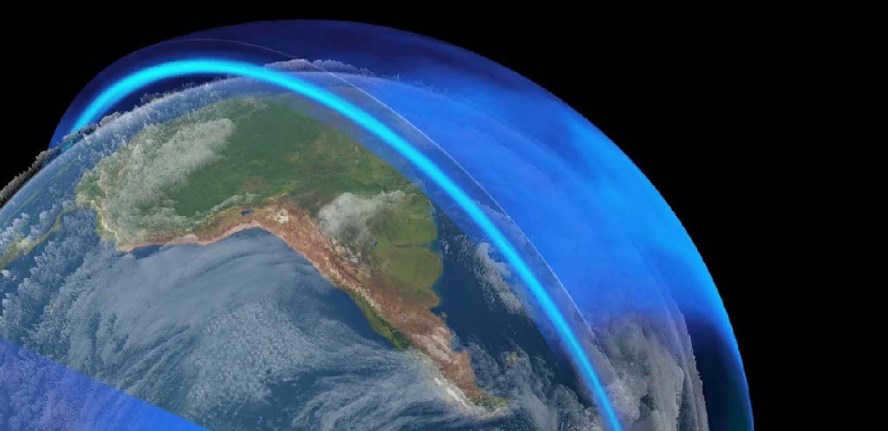
Nevertheless, the vast distance of about 650-700 light years separates Betelgeuse from Earth. It is highly improbable that we would receive significant amounts of substances such as X-rays and ultraviolet radiation emitted by these stars.

If this star were situated 50 light years from our planet, it would pose a potential threat to Earth. Furthermore, any fragments expelled from its explosion would take approximately 6 million years to reach us. Should Betelgeuse erupt, it would merely leave a subtle mark in the nighttime firmament, akin to the luminosity of the moon.

There is a belief among certain individuals that the explosion of the star Betelgeuse will mark the apocalypse for humanity. This notion originated from the Mayan prediction of December 12, 2012, which happened to coincide with the announcement of the impending supernova of Betelgeuse.
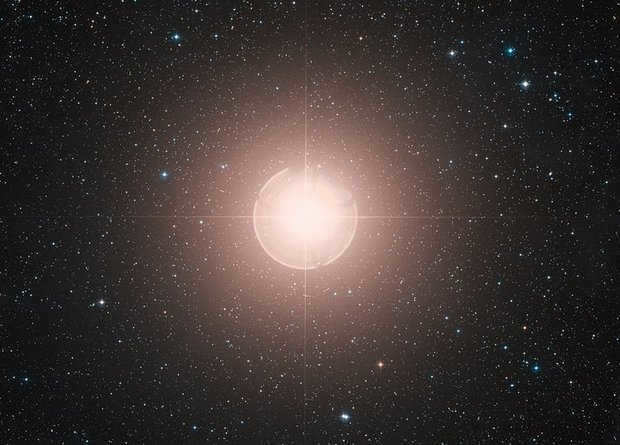
The vanishing of the complete Orion constellation will be a major outcome resulting from the explosion of Betelgeuse. Observers will no longer be able to witness Orion in its current form. However, the memory of Orion will endure among people and through various mediums like photographs, projections, and videos.
What makes the Betelgeuse supernova an extraordinary occurrence
In the vast expanse of our Milky Way galaxy, supernova events are exceedingly uncommon and occur in isolation, making them significant opportunities for space exploration and research. In a remarkable instance, during the autumn of 1604, a star in the Serpentine constellation transitioned into the supernova stage, situated at a staggering distance of 20 thousand light years.

Various scientists observed the explosion of the star Betelgeuse, but it was Johannes Kepler who documented this phenomenon and gave it its name. Simultaneously, people all over the world were witnessing another extraordinary event from Earth – the conjunction of Mars and Jupiter.
The supernova appeared in close proximity to this celestial duo, creating a remarkable moment in astronomy.
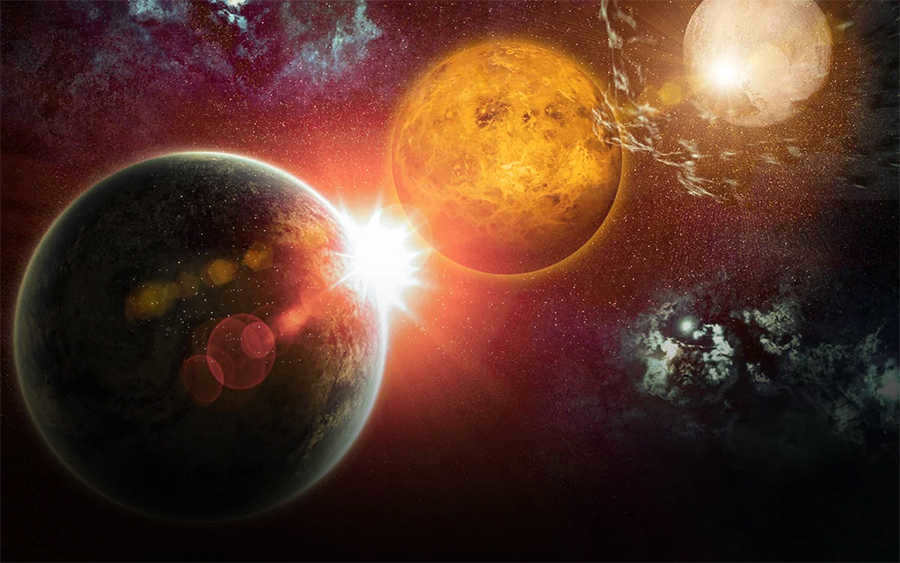
Not long ago, specifically in 1987, there was another occurrence of a supernova. It happened in the constellation of the Goldfish, located at the outskirts of the Tarantula Nebula, which can be found in a small galaxy orbiting our Milky Way known as the Large Magellanic Cloud. This extraordinary event took place at a staggering distance of 168 thousand light years, resulting in the appearance of a supernova star.
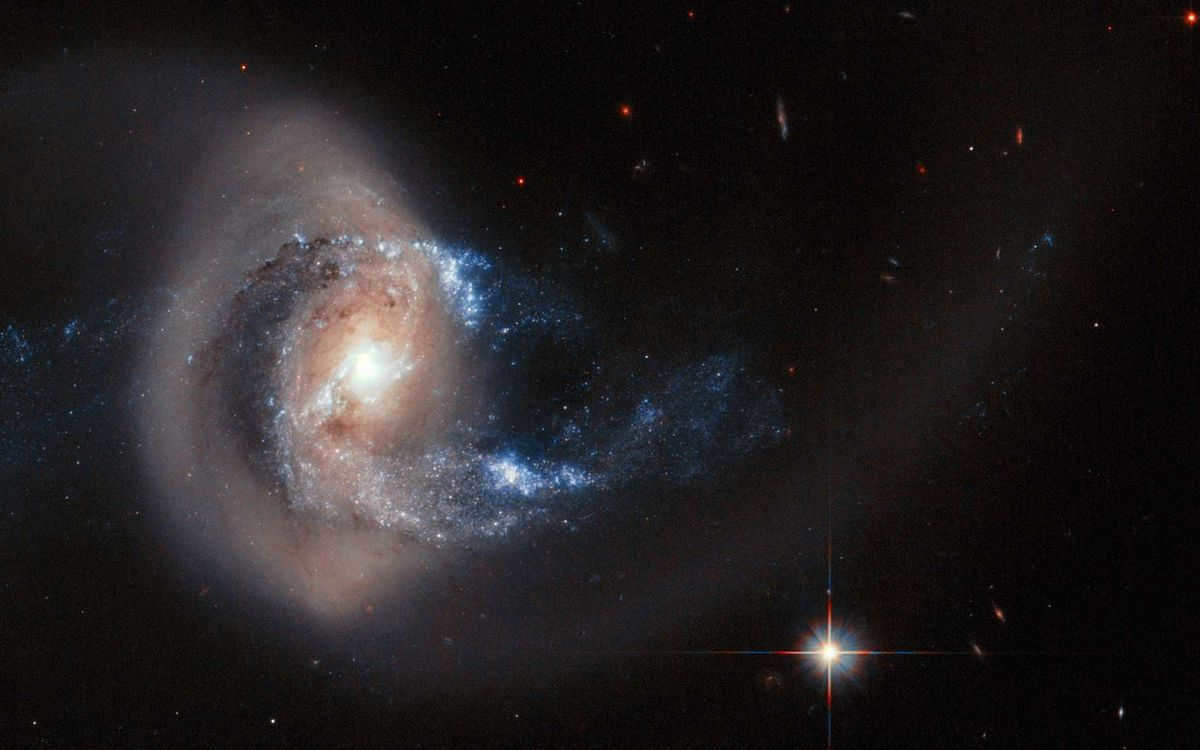
SN 1987A, which was discovered by Canadian astronomer Jan Campanas and captured by the Hubble telescope astrographer McCom Note, exhibited a continuous increase in luminosity for a period of three months. Despite the considerable distance between us, this event marked the closest flare since its initial discovery. For those interested, a video documenting this fascinating phenomenon can be easily found online.
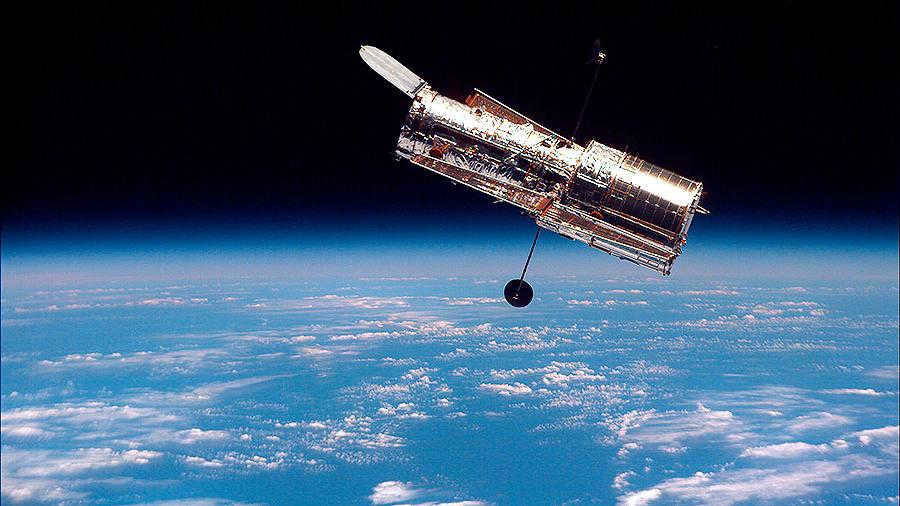
The supernova event of the Betelgeuse star is set to create a major sensation amongst astronomers and astrophysicists, as it will provide an unprecedented opportunity to enhance our understanding of the universe and the process of stellar death. However, it is important to note that the actual explosion will not be visible in the sky until approximately 700 years after it occurs.
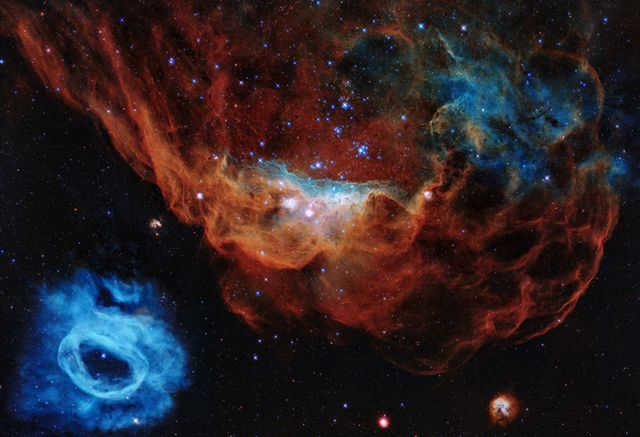
Why scientists face challenges in determining the approximate date of Betelgeuse’s supernova
Prior to this event, there was limited understanding and equipment available to monitor such processes. Moreover, the occurrence was sudden and did not allow for sufficient time to precisely document the ensuing phenomenon.
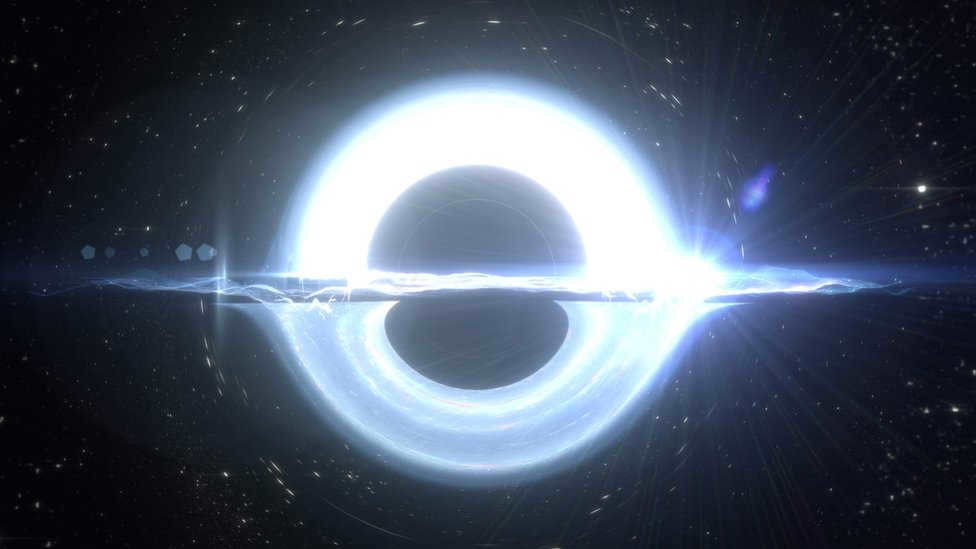
Thus, it is extremely challenging to anticipate the potential actions that will precisely indicate an imminent occurrence.
The scarcity of information greatly impacts scientific investigation. However, here emerges an enormous and one-of-a-kind star reaching the supernova phase.
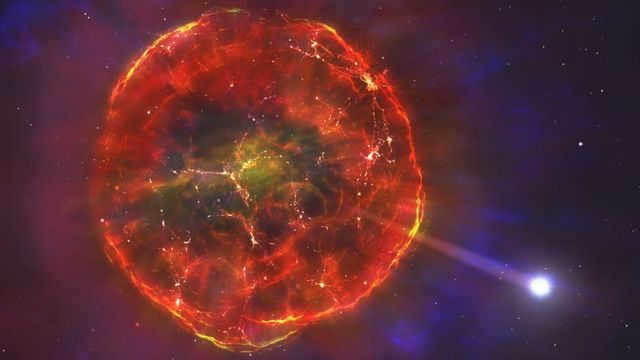
Astronomers have the unique opportunity to closely study explosions like this, which can provide valuable insights and new discoveries in the field of astrophysics. Such an event would revolutionize our understanding of space and add new dimensions to our knowledge. Just like the explosion itself, which would illuminate our night sky and offer a breathtaking spectacle for all to witness.

+7 926 604 54 63 address

The constellation Orion contains a notable red giant star called Betelgeuse. This star is easily recognizable and one of the brightest objects in the night sky. It is located at a distance of 500-800 light-years from our Solar System, making it relatively close in astronomical terms. Betelgeuse is also a candidate for a future supernova event, which would make it even more significant in the scientific community. In terms of size, the star has a diameter of 10-20 astronomical units (a.u.). To put this in perspective, if Betelgeuse were placed at the location of our Sun, it would extend all the way to the orbit of Jupiter or Saturn.
It is highly likely that Betelgeuse has entered its final stage of evolution, which may culminate in a spectacular supernova explosion. While many stars, including our own Sun, go through a phase where they become red giants, only those with a mass above a certain critical value (around 8-10 times that of our Sun) are capable of undergoing a supernova explosion. For stars with masses similar to that of our Sun, it is expected that they will transition into a white dwarf without any explosive event. In recent years, Betelgeuse has been frequently mentioned in this context, as its immense mass suggests that it could explode in the near future and potentially have a significant impact on the surrounding environment. However, there are several complexities in this story from an astrophysical perspective.

Is Betelgeuse going to explode?
One issue we face is the uncertainty surrounding the mass of Betelgeuse (as well as its distance and size). To determine the mass of a distant celestial body, we typically rely on the presence of companion objects, such as a binary star system. However, Betelgeuse does not have any gravitationally bound companions. As a result, scientists have had to resort to indirect methods to estimate its mass, leading to a wide range of values from 8 to 20 times the mass of our Sun. In fact, some of the lower estimates place it outside the category of stars that are capable of undergoing supernova explosions.
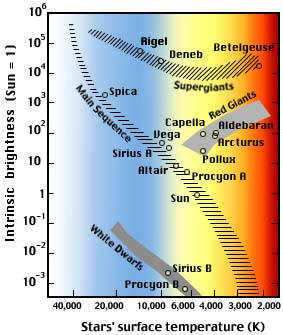
If we delve deeper into the issue, the level of uncertainty only increases. The simplified notion that the evolution of stars is linked to their masses, and that a red supergiant star will inevitably undergo a supernova explosion, is an oversimplification. In reality, the timing of a supernova explosion is not always tied to the red supergiant stage. A recent example is the supernova SN 1987 A in the Large Magellanic Cloud, which occurred during the blue giant phase. In the case of other extragalactic occurrences, it is safe to say that a giant star can explode at various stages and belong to different spectral classes. Therefore, we cannot be completely certain that a star is inherently capable of undergoing a supernova explosion, or that it will occur at the anticipated stage. However, let’s assume that it does follow the script we have outlined.
When and where?
The question of when the event will occur is currently uncertain. It is impossible to make accurate predictions about the timeframe, whether it will happen within the next thousand years or several million years in the future. Popular science articles on this subject often provide various estimates, such as 2-3 thousand years, around a hundred thousand years, or even several million years. These estimates are likely based on modeling calculations mentioned in different scientific publications.
As of our current understanding of the physics involved, it is still possible to anticipate the explosion of a star, albeit with a limited time frame of a few hours. It is anticipated that the initial indicator of the supernova event will be a surge in neutrino emissions: these particles will freely escape from the star’s vicinity, while the resulting shockwave will experience a temporary delay as it traverses the star’s internal layers before erupting on the surface. This scenario bears some resemblance to solar flares, where bursts of electromagnetic radiation travel to Earth at the speed of light, while phenomena associated with thermonuclear reactions and convection become observable after a certain delay.
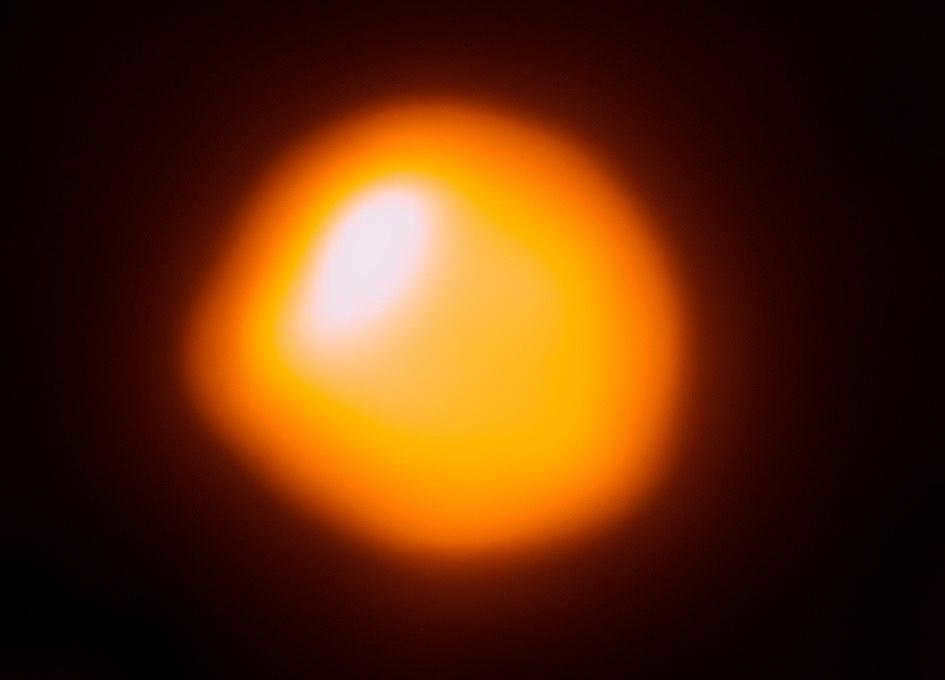
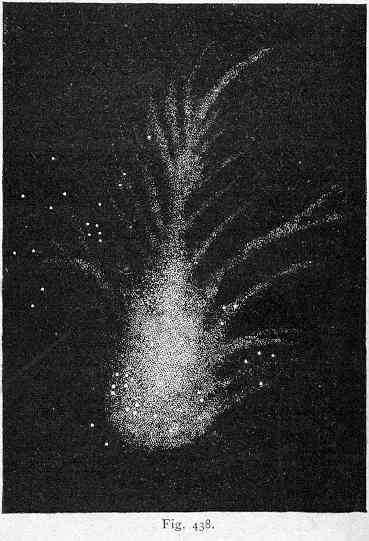
Supernova explosions have occurred within the course of recorded history. The Crab Nebula, located in the Taurus constellation, is a remnant of a supernova that erupted in the year 1054 and was extensively documented by Chinese astronomers. The brightness of the star was so intense that it could be seen even during daylight hours. This particular nebula is the first to be linked to the explosion of a star that was observed and recorded in historical accounts. However, the star that underwent this explosive event is situated at a much greater distance compared to the nearby star clusters found within the Gould Belt, such as Orion and Scorpius. In fact, it is approximately 6500 light-years away. The New Age brought about the opportunity for direct observation of two galactic supernovae, occurring 30 years apart – the Tycho Brahe supernova SN 1572 in the Cassiopeia constellation, and the Kepler supernova SN 1604 in the Serpentine constellation. Both of these supernovae were located at similarly significant distances from our Solar System.
In late 2019 and early 2020, Betelgeuse experienced a remarkable decrease in its brightness, fading to +1.6 m by February (its usual brightness hovers around +0.5 m) – sparking speculation of a nearby explosion. However, the star’s brightness eventually returned to normal levels. A similar anomaly was observed by astronomers in 2009-2010, when they noticed fluctuations in brightness as well as a rapid change in the star’s size. It seems that the idea of an imminent explosion of Betelgeuse, which gained popularity in scientific publications, originated from that time. Betelgeuse stands out among other stars because we can study not only its point-like characteristics, but also its shape and size. The decrease in size is logically associated with the impending gravitational collapse due to the star’s matter burning out and the imminent initiation of an explosive chain of thermonuclear reactions. However, the star once again returned to its normal state. Such fluctuations are common for Betelgeuse, as it is a long-period pulsating star with a dominant period of about 400 days. Its brightness and size undergo changes, although the mechanisms behind these fluctuations are not yet fully understood. We can expect another increase in brightness in September 2020, followed by another minimum in April 2021. Since Betelgeuse is located close to the Sun on the celestial sphere during late spring and early summer, it is planned to be studied using telescopes in solar orbit, particularly the STEREO mission.
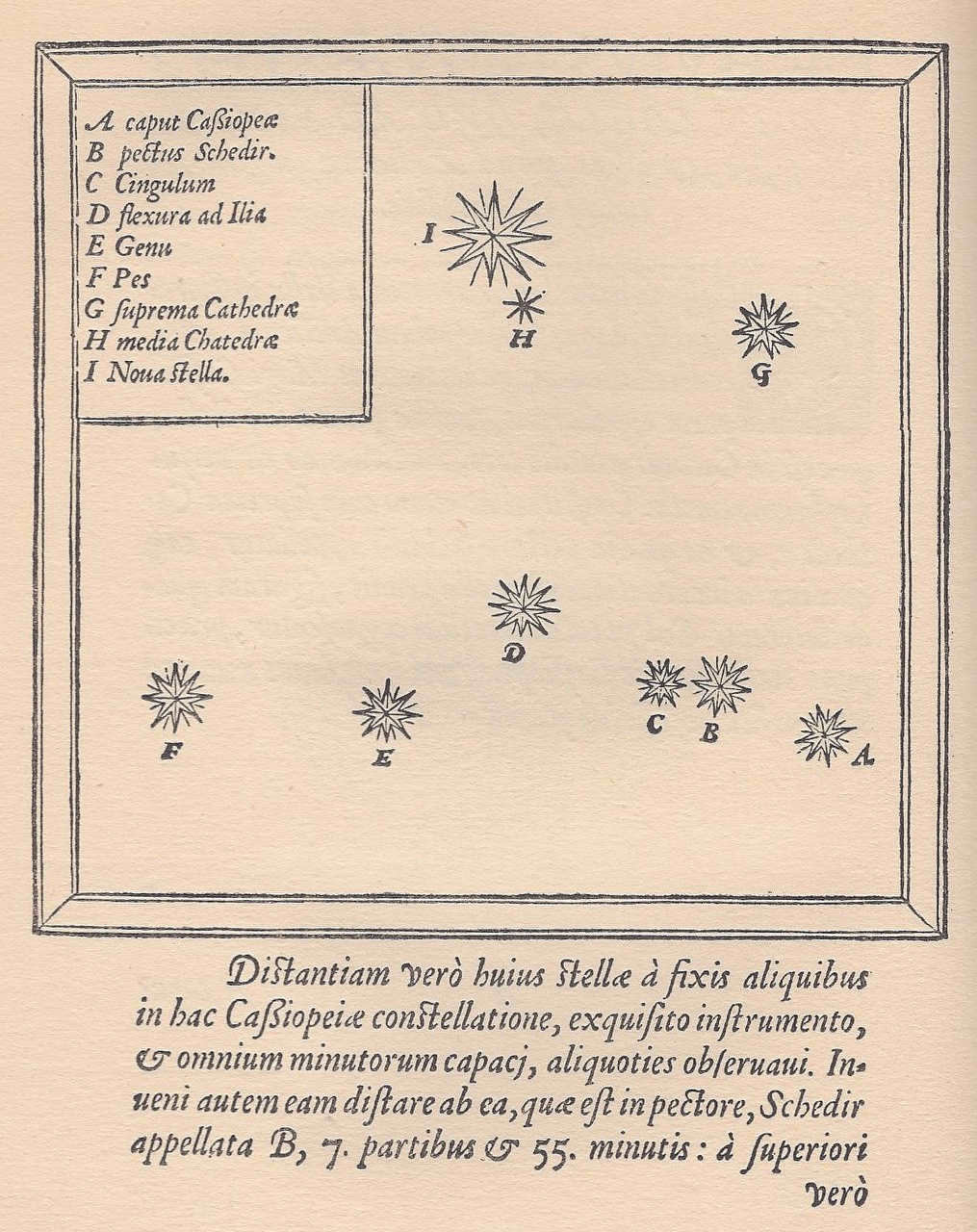
Professional astronomers have compared the recent explosion of the supernova Betelgeuse to similar events that have occurred in modern times. However, it is anticipated that this explosion will be even more spectacular due to its closer proximity to the star. It is predicted that the star will become as bright as the Moon at full moon and will be visible during the day. The increase in brightness is estimated to be around 10000 times, or 10 star magnitudes (reaching a magnitude of -11 to -12). This incredible glow will last for several months before gradually fading away over the course of several months or even a year. Despite its grandeur, this event is not expected to have any negative effects on Earth’s biosystems. The star is located far enough away and our atmosphere, along with our magnetic field, will provide sufficient protection by shielding us from any harmful radiation.
Various authors have differing opinions on the minimum distance at which a supernova explosion could pose a threat to our planet, with estimates ranging from 50 to 150 light-years. It is believed that throughout geological history, there have been several such explosions from nearby stars, which have resulted in partial mass extinctions. It is possible that the most recent event of this kind occurred approximately 2.5 million years ago, leading to the extinction of certain species at the end of the Pliocene era. However, it is worth noting that most potential supernova candidates, including Betelgeuse, are currently located several hundred light-years away or even farther. This is primarily due to the position of our solar system in relation to the surrounding galactic structure, where the majority of nearby giant stars are situated. For more information on this galactic structure, please refer to our article from January.
The history of Betelgeuse will not come to an end with its explosive and subsequent disappearance from the sky. The explosion will expel the gas and dust envelope surrounding the star into outer space. These shells typically travel at speeds of 10,000 km/s following the explosion, and we have observed similar clouds in locations where supernova explosions have occurred. This plasma bubble envelope will reach our solar system approximately 100,000 years after the explosion. Within this plasma, there are intense magnetic fields and high-energy charged particles, resulting in strong X-ray radiation. Fortunately, Earth’s magnetosphere and atmosphere should offer sufficient protection against this “stellar wind.” However, it is important to consider safeguards against its effects for space travel, just as we currently plan for the “space wind” from the Sun and beyond our solar system.
Perhaps the explosion of Betelgeuse – indeed.
Betelgeuse is merely one potential candidate for a supernova within our immediate cosmic vicinity. The increased focus on this celestial body is likely attributed to numerous claims regarding its peculiar characteristics, such as abrupt fluctuations in size and luminosity. Due to its relative proximity and size, astrophysicists have a unique opportunity to conduct more detailed studies on Betelgeuse compared to most other stars, resulting in a greater abundance of breakthrough discoveries associated with it. The enthusiasm surrounding Betelgeuse is further fueled by longstanding theories concerning the trajectory of stellar evolution, which suggests that a supernova of this nature (type II) should occur during the red giant phase of a supermassive star. However, data on extragalactic supernovae reveal a more diverse range of evolutionary scenarios, implying that we can anticipate supernova explosions from numerous other nearby giant stars.
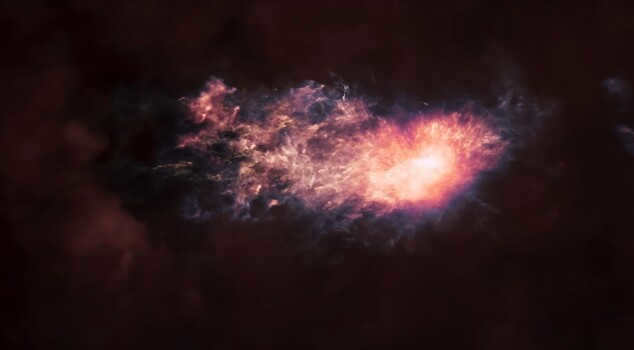
What is Betelgeuse
Betelgeuse, also known as Orion’s Alpha, is the most luminous star in the Orion constellation. It is renowned for its striking red glow, which has captivated astronomers throughout history. Even without the aid of telescopes, ancient astronomers pondered the nature of Betelgeuse, marveling at its brilliance from Earth’s surface. Accounts from different eras describe the star’s color differently, with earlier observations noting a yellowish hue and later observations describing a scarlet light. Furthermore, Betelgeuse’s brightness has been known to fluctuate, sometimes dimming and then reigniting once again.
Scientists were only able to explain this phenomenon relatively recently, thanks to modern equipment, which revealed that Betelgeuse is a super-red giant. Despite being relatively young (no more than 10 million years old), the star is rapidly depleting its fuel, bringing it to the final stage of its life cycle. It is expected that the star’s luminosity will soon explode, resulting in the formation of either a small neutron star or a black hole.
What happens when Betelgeuse goes supernova
Until recently, scientists were convinced that the event would occur very soon. During the observation period from 1993 to 2009, the star’s radius decreased by 15%, which could potentially indicate the impending demise of the celestial object – conspiracy theorists saw it as undeniable proof of the prophecy of the world’s end according to the Mayan calendar. Additionally, two years ago, astronomers documented an unprecedented decrease in Betelgeuse’s brightness… However, the measurements returned to normal levels just a few months later. The red supergiant has yet to explode.
Scientists have now come up with several theories to explain the anomaly. One theory suggests that the dimming of Betelgeuse is due to a large cold spot on the star’s surface. This is because the temperature of different areas on red supergiants can vary due to convection. Another theory proposes that a cloud of cosmic dust briefly obstructed the star’s light from reaching the observation equipment. In other words, the apocalypse has been postponed for now. It is predicted that Betelgeuse will eventually explode in the near future, but not within days – it will only happen in thousands or tens of thousands of years. Even then, the Earth is unlikely to be in any danger.
What will occur when Betelgeuse explodes?
Astronomers from all over the world are eagerly interested in the destiny of Betelgeuse due to one straightforward reason: the scientific community has never before had the opportunity to analyze the process of a supernova within our galaxy. The most recent occurrence of this nature was recorded in 1604, however, at that time, researchers did not possess advanced equipment, and the distance to the point of explosion was much greater – 13,000 light years. On the other hand, the constellation of Orion is located 700 light years away from the solar system – from an astronomical standpoint, it is comparable to observing fireworks through a microscope.
What is the potential danger for ordinary people in all of this? In reality, there is none at all. If a supernova were to occur within 50 light years of Earth, the release of energy would be catastrophic and destroy the planet. However, Betelgeuse, as previously mentioned, is located 700 light years away. The only notable impact for the general population would be the incredibly bright glow emitted by the dead Betelgeuse, which would be visible even during daylight hours.
There have been a number of peculiar events surrounding Betelgeuse in recent years, including its eclipse. Interestingly, this phenomenon was quite different in ancient times. “Hitech” presents the main narrative.
Discover “Hitech” on
Betelgeuse, a red supergiant, is approximately 764 times larger than the Sun and is situated roughly 548 light-years away from our planet. To put it in perspective, the diameter of Mars’ orbit around the Sun is 328 times larger than that of our star. Infrared investigations have revealed that Betelgeuse is encompassed by massive shells of material that appear to have been shed by the star during episodes of mass loss over the past 100,000 years. The largest of these shells has a radius of nearly 7.5 light-years.
Betelgeuse, also known as Alpha Orionis, can be found in the constellation with the same name, specifically in the eastern shoulder of the hunter. Its name is derived from the Arabic phrase “bat al-jawzāʾ,” which translates to “shoulder of the giant.”
What is the recent activity of Betelgeuse?
Betelgeuse is easily visible in the night sky, even to novice astronomers. This is due to its brightness, its location within the constellation Orion, and its distinctive red color.
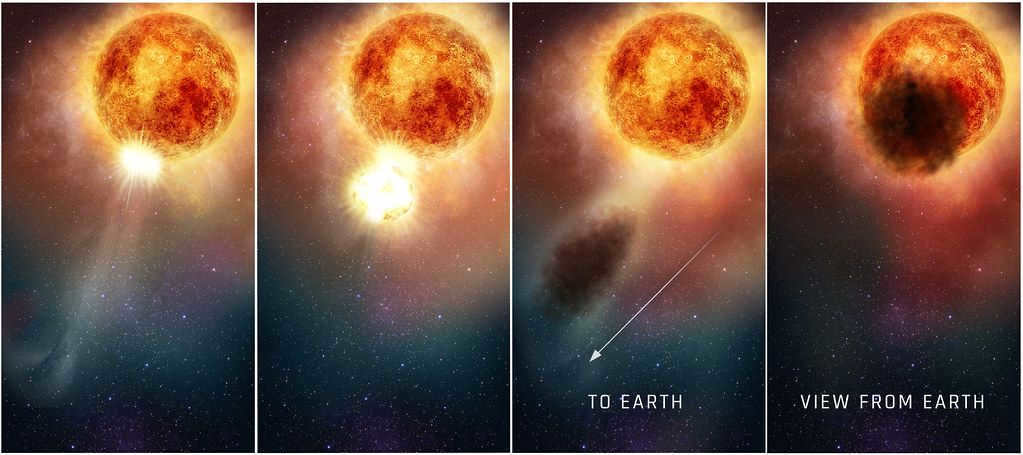
It is classified as a variable star, with an apparent magnitude of approximately 0.6. However, during the latter part of 2019, it experienced a noticeable decrease in brightness. By early 2020, its apparent magnitude had decreased to 1.6, but later in the year, it returned to its original luminosity. This event, known as the “Great Dimming” (depicted above), occurred as a result of a massive release of gas that subsequently condensed into dust particles as it cooled.
Nevertheless, the star has undergone other significant transformations throughout its long history.
What causes a star to undergo changes?
A star undergoes changes in its brightness, size, and color as nuclear fusion occurs at its core. These properties provide valuable insights into the star’s age and mass. Stars with greater mass than the Sun can appear either blue-white or red. However, the transition from the “red stage” to the “yellow-orange stage” happens relatively quickly in astronomical terms.
A team of astrophysicists from the Max Planck University of Jena in Friedrich Schiller, Germany, along with researchers from the United States and Italy, have recently observed and dated a color change in Beteltgeuse. By analyzing historical records, they determined that this star was yellow-orange approximately 2,000 years ago. Their findings are published in the latest edition of the Monthly Notices of the Royal Astronomical Society.
Around 100 B.C., Sima Qian, an astronomer in the Chinese court, documented the various colors of stars. He described Sirius as white, Antares as red, Betelgeuse as yellow, and Bellatrix as blue. Professor Ralf Neuhäuser from the University of Jena explains that based on these descriptions, scientists determined that Betelgeuse’s color during that time was a combination of the blue-white of Sirius and Bellatrix, as well as the red of Antares.
Interestingly, independent of Sima Qian’s observations, the Roman scientist Hyginus, 100 years later, compared Betelgeuse’s color to the yellow-orange hue of Saturn. This further serves as evidence that the color of the star has changed over the span of 2,000 years.
Researchers have also examined the documents of Ptolemy. Based on his findings, there was a period when Betelgeuse was not classified among a cluster of prominent crimson stars like Antares (located in the Scorpius constellation) and Aldebaran (in Taurus).

The star Antares, with its Greek name meaning “resembling Mars”, has been associated with the Red Planet for centuries in various cultures worldwide.
When is it going to burst?
Ralph Neuhäuser, an astronomer, has been integrating historical astronomical observations into his astrophysical research for the past decade. He collaborates closely with other philologists, historians, and natural philosophers. “There are numerous astrophysical issues that can hardly be resolved without historical observations,” the scientist clarifies.





